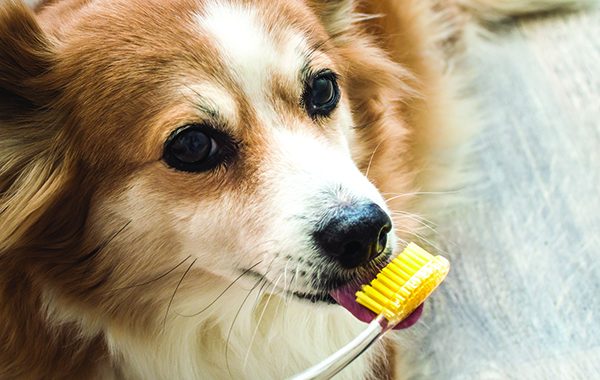Canine Training Treats

Canine Training Treats
Entire Dog Journal is known for its inside and out, blunt yearly surveys of dry and wet canine food – yet we infrequently audit canine treats. This would appear to contradict the way that we additionally continually prescribe giving food treats to your canines for preparing and traditional molding. There is presumably not a solitary issue in our 23-year history that doesn’t refer to the significance and benefit of taking care of treats. So what gives?
Here’s the scoop: We are solid advocates of utilizing genuine nourishment for treats. As we would like to think, business canine treats are regularly defiled with fixings that are remembered for the equation to expand the item’s timeframe of realistic usability, appearance, surface, or potentially acceptability. We believe that fixings ought to be incorporated distinctly for their sustenance and allure – and, I surmise I ought to underline, I mean their appeal to canines. The utilization of tones – and particularly counterfeit tones – to make canine treats look interesting to people is totally absurd and unfortunate.
However, there are various reasons that individuals like to purchase business canine treats. A few groups like the accommodation of the all-encompassing timeframe of realistic usability of locally acquired canine treats. Individuals who don’t care for preparing or cutting food into smidgens might see the value in that this work has been accomplished for them by treat makers; truth be told, I have veggie lover companions who wouldn’t fret purchasing naturally fitting substantial food sources for their canines, however, who don’t care for purchasing, cooking, and slicing up meats to use for canine treats.
Most delightfully, a few proprietors find that their canines truly appreciate being taken to a pet stock store and looking for treats that the canines know are only for them! What’s more, they get truly energized each time they hear the treat bundle crease.
Thus, we should do this present: Let’s discuss solid and engaging treats for canines – both home-ready and business. I’ll stop for a minute I and many canine mentors most emphatically suggest utilizing for preparing treats and what to search for (and pay special mind to) in a business treat. Smartest possible solution? That is our objective.

Genuine FOOD FAVORITES
Each canine coach I know utilizes and advances the utilization of food varieties like chicken, broil hamburger, ham, cheddar, etc for canine preparation. Yet, I can’t disclose to you how often I’ve heard another canine proprietor shout, “Pause! I figured we should give human food varieties to our canines!”
Excuse me; I will have a short fit of rage. Where the Xoloitzcuintli did this legend begin? Who is as yet spreading this deception to honest canine proprietors? Carry them to me!
People: There is nothing of the sort as “human food.” Food will be food! Canine food is made of food – even though there are fixings in some canine food sources we don’t normally eat ourselves (however we could in case we were starving). The way that canine food and canine treats are fabricated with fixings that are prepared with for the most part settle for less than human food varieties doesn’t discredit them as food sources.
When helping new practices to canines – or asking them for practices that are truly trying for them – coaches generally suggest utilizing rewards that are of “high worth.” (Note: Some mentors shun the utilization of food treats, and utilize high-esteem toys as reinforcers. This article isn’t for them.)
What comprises a high-esteem food treat changes from one canine to another, and coaches urge their understudies to attempt loads of various food sources to discover an assortment of things that their canines find overpowering. Be that as it may, a few qualities are attractive to most canines:
- Meatiness. Name a slice of meat – odds are your canine will like it. We’ll place fish into this class, as well; it has the additional allure of a solid smell. Eggs are not actually thought about meat, yet they contain a comparative degree of protein and fat, and most canines are similarly drawn to eggs as meat.
- Fattiness. Offer a high-fat food and a lower-fat variant to a similar canine, and he will quite often pick the higher-fat form.
- Sweetness. Canines take after people in such a manner; they like sweet food sources. (Did you realize that felines, conversely, don’t have taste-bud receptors for pleasantness?)
- Saltiness. Canines additionally like the flavor of salt, however, they normally tap out at lower measures of salt than people.
- Novelty. A minority of canines will consistently pick a similar treat over a “trail blend” of treats that are of a similar surmised esteem. Canines like assortment!
You can test this with your own canine. Assemble three or four distinct treats, including your opinion about your canine’s top choice. Put that presumed top pick in one shut hand and an alternate one of comparable worth in the other hand (likewise shut). Permit him to sniff each hand, then, at that point open two hands at the same time.
Rehash however many occasions as you like, continually putting something similar “top choice” treat in a similar hand and fluctuating the kind of treatment in the other hand. We’ll wager you that he picks the “new” treat more regularly than possible.
Alerts
Regardless of our previous fit of rage about the misguided judgment that human food is awful for canines, there are few food sources and fixings that canines shouldn’t eat. This may be because the food varieties can be harmful to canines whenever burned through inadequate sums to canines (like onions, chocolate, grapes and raisins, and anything containing xylitol) or because they are no greater for canines than they are for people, like exceptionally prepared, added substance loaded low-quality nourishment.
Additionally, if your canine has food hypersensitivities or is bigoted of specific food sources, definitely, do exclude food varieties that you realize will cause him to feel unwell.
In any case, get that if your canine eats a similar food every day (and has for quite a long time or even a long time) – you’ve been taking care of him this way since you thought you should – he might experience an annoying stomach when you present new food varieties. In case he’s been on an exceptionally limited eating regimen, his stomach-related lot will set aside a little effort to acclimate to anything new. Begin with limited quantities, and increment just if his absorption stays reliable (no the runs, clogging, or heaving).

Solid TREATS FROM YOUR KITCHEN
Regardless of whether you are searching for treats to use for preparing, traditional molding (to change a canine’s relationship with a boost from negative to positive), or because you appreciate giving out treats to your canine partner, you can think about pretty much any “genuine food” in your kitchen (save those referenced in the “Alerts” sidebar underneath). Offer your canine a little example of any single-fixing, unadulterated food and see what he prefers! Here are some extraordinary up-and-comers:
- Any kind of cooked meat. We like to utilize chicken: bubbled, seared, canned, frozen/defrosted strips, or cut. Cheap lunch meat and franks are OK, however, know that these are normally loaded with undesirable added substances and high in fat and salt.
- Eggs. Pieces of mixed or hard-bubbled eggs function admirably.
- Fish. Bits of canned fish or sardines, or bits of cooked or dried fish.
- Cheese. A few canines can deal with any measure of cheddar without stomach-related results; others quickly respond with gas and the runs. Start with small, pea-sized sums and trial. Cheeses like feta and Parmesan offer taste and additional smell.
- Fruit. A few canines love a new natural product like bananas, watermelon, peaches, pears, and strawberries, or dried or dried-out natural products.
- Vegetables. Fewer canines like veggies, yet there are canine enthusiasts of carrots, zucchini, yams, green beans, broccoli, and the sky is the limit from there. Most canines consider these as lower esteem than substantial or sweet food varieties, however, even lower-esteem treats have a spot in preparing.
Low-Fat Treats
Did you realize that 1 gram of starches contains a similar number of calories as 1 gram of protein? It’s actual: Both protein and carbs contain 4 calories for each gram. Need to realize what number of calories are in 1 gram of fat? One gram of fat contains an incredible 9 calories – more than twice that of protein or carbs.
Fat is profoundly interesting to canines – however, it’s not by any means the only thing that canines like. Regardless of whether you are purchasing or making treats for an overweight canine or one who is inclined to pancreatitis, search for items that contain lower measures of fat. Continuously check the measure of fat and calories on the name, and contrast the sums with different treats you are thinking about.
Here’s a tip: Include a couple of high-fat treats in a blend of low-fat treats in your “snare sack” (regardless of whether that is a wearable pocket or a bowl of treats on your kitchen counter). This keeps your canine intrigued, similar to a card shark playing a gaming machine that offers variable prizes (and a bonanza from time to time) or a child gathering Halloween candy (only one of those full-size pieces of candy inspires a child to walk another couple of squares). Add a portion of your canine’s normal kibble, as well; the lower-esteem treats make the higher-esteem ones stick out!
Shouldn’t something is said about STORE-BOUGHT DOG TREATS?
At the point when I have another, undeveloped cultivated canine remaining with me, I load up at the supermarket with genuine food to utilize every day as preparing and molding treats. Yet, when just our two all-around prepared grown-up canines are at home, I by and large keep just a sack of business treats conveniently. I snatch a small bunch sometimes (maybe as little as when at regular intervals) to use as shock fortifications for practices I expect of them and at this point don’t build up each time – things like coming when I summon them from yapping at individuals strolling by our property or ceasing from bouncing up to welcome visiting companions.
Similarly likewise with “genuine food” treats, we search for items that contain heaps of what canines like (and is sound for them) and few or no superfluous fixings. This is what to search for in a business treat:
- Named Meats. It ought to abandon saying that the fixing name ought to determine what types of creature the meat came from (i.e., hamburger, chicken, sheep, and so forth) Muscle meat is lower in fat than organ meats, however, canines love organ meat much more, most likely due to its high-fat substance. (We consider hearts organs, and canines like the heart as much as the liver, kidney, and spleen, however, they are made of muscle.) Treats that contain muscle and organ meat will in general be exceptionally interesting to most canines.
- Few Ingredients. The more drawn out the rundown of fixings, the almost certain it is that the item contains minimal expense fillers and fake added substances. The most reduced expense treats ordinarily have the longest rundown of fixings. Try not to purchase these!
- Ingredients That Are Readily Identified And Only Lightly Processed. Stay away from results. Everybody knows what wheat or corn is – however, would guess what “brewers dried grains” have experienced or how corn gluten supper is made? No? Then, at that point don’t accept treats that contain fixings like this.
- Only Natural Preservatives, Or None At All. Stay away from items with counterfeit additives like BHA, BHT, and ethoxyquin. “Blended tocopherols” (nutrient E) is a worthy regular additive. Meats that have been freeze-dried or got dried out by some other strategy don’t need additives.
- “Best By” Dates And/Or Date Of Manufacture. Search for these dates, and attempt to purchase the freshest item accessible.
- Premium Ingredients. We like to help organizations that utilization fixings that are confirmed natural, grass-took care of, accommodatingly raised/butchered, and additionally economically fished.









